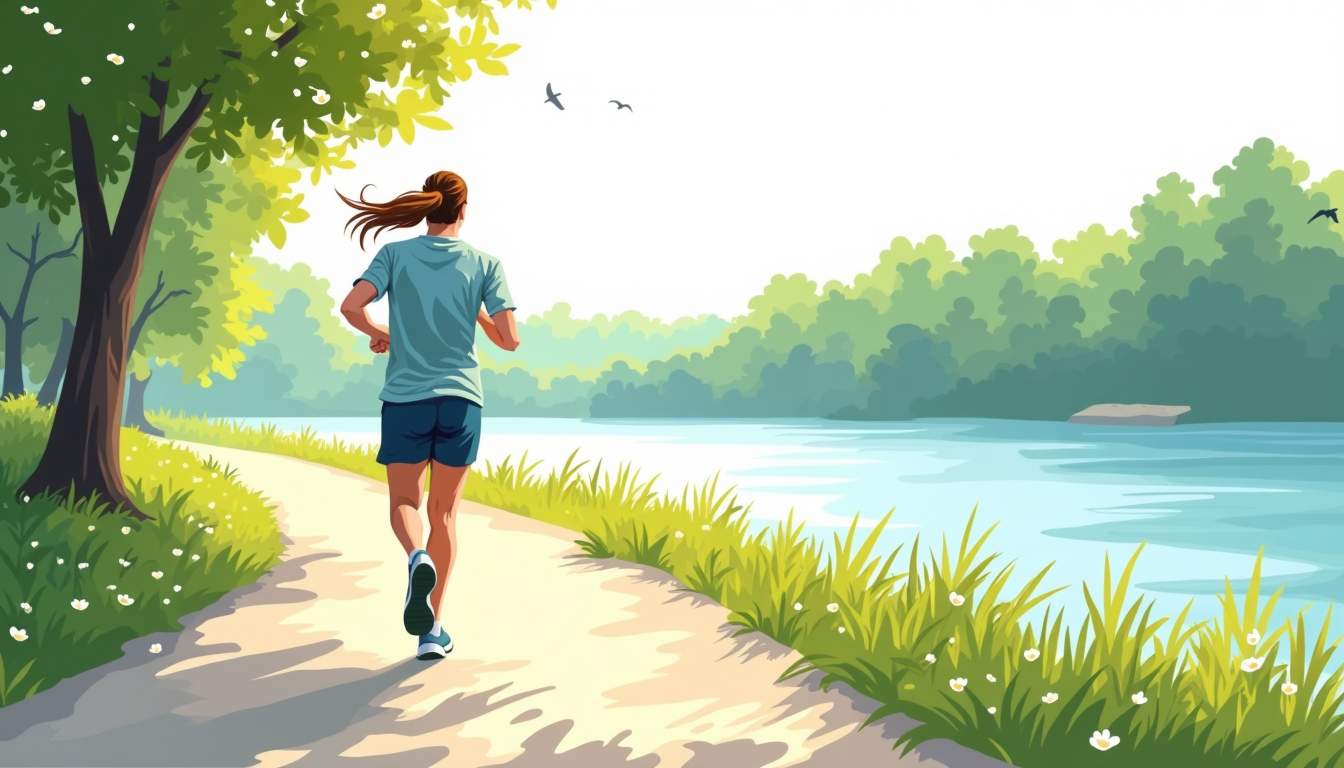
There is a special, slow rhythm to life beside a lake. Mornings arrive with mist lifting from the water, evenings close with long, quiet reflections. For many, moving closer to a lake becomes a deliberate choice to improve health, reduce stress, and reconnect with the natural world. This article explores why lake living supports wellness, offering practical ways to embrace the benefits whether residing full-time at the shore or visiting regularly for weekend reprieves.
Water exerts a calming influence on the human brain. Studies in environmental psychology consistently show that proximity to bodies of water reduces stress, lowers anxiety, and improves mood. The combination of visual openness, reflective surfaces, and natural soundscapes invites the nervous system to shift from a state of sympathetic arousal—fight or flight—into parasympathetic calm, promoting recovery and mental restoration.
Beyond immediate stress relief, lakeshore environments often encourage mindful activities: watching wildlife, observing changing light on the water, and following the rhythm of waves or wind. These simple, sustained attentions can function like informal meditation, helping to clear intrusive thoughts and build resilience against daily pressures.
Spending time by a lake supports attention restoration, a process where directed attention—used for work and focused tasks—can recover through exposure to softly fascinating stimuli. The gentle motion of water, rustling reeds, and passing clouds provide just enough sensory interest to rest cognitive muscles without overwhelming them. For people engaged in mentally demanding jobs, frequent breaks by the water can lead to measurable improvements in concentration and creativity.
Moreover, exposure to natural lake settings can encourage physical activity, such as walking along the shoreline or kayaking, which further enhances mental well-being through exercise-induced endorphin release. The combination of gentle physical movement and immersive natural scenery creates a holistic environment for mental rejuvenation that extends beyond passive observation.
Social interactions around lakes can also contribute positively to mental health. Lakes often serve as communal spaces where people gather for recreational activities, fostering a sense of belonging and social support. The shared experience of nature-based activities can strengthen interpersonal bonds and reduce feelings of isolation, which are critical components of psychological resilience.
Access to a lake makes outdoor exercise more appealing and varied. Swimming, paddling, and shoreline walking are effective low-impact activities that support cardiovascular health without the joint stress of high-impact workouts. Regular movement in natural settings also encourages better sleep patterns, improved appetite regulation, and more consistent routines—key components of holistic physical wellness.

Temperature regulation and air quality often improve near open water. Lakes can moderate local climates, producing cooler afternoons in summer and milder nights in fall. In many regions, lakeside air carries fewer urban pollutants and a higher concentration of negative ions, which some research links to mood enhancement and respiratory benefits.
Water-based exercise is especially valuable for rehabilitation and mobility work. Buoyancy reduces load on joints, allowing for longer, more comfortable movement sessions. Aquatic therapy and gentle swim programs provide resistance training with minimal injury risk, aiding in recovery from surgeries, arthritis flare-ups, and chronic pain conditions.
Beyond therapeutic uses, lakeside living encourages a more active lifestyle by providing natural venues for recreational sports such as kayaking, stand-up paddleboarding, and even water yoga sessions. These activities engage multiple muscle groups and improve balance and coordination, which are essential for maintaining mobility and preventing falls as we age. Furthermore, the soothing sound of water and the visual tranquility of lakeside landscapes can reduce cortisol levels, decreasing overall physical stress and tension in the body.
Additionally, the availability of serene lakeside paths and trails supports routine walking or jogging that is not only beneficial for heart health but also for strengthening bones through weight-bearing activity. The combination of fresh air, natural scenery, and physical activity contributes to enhanced immune function, making residents less susceptible to common illnesses. This holistic integration of environment and exercise exemplifies why lakeside living can promote sustained physical well-being.
Lakes foster a strong sense of community. Shared activities—boating, fishing, lakeside picnics, and volunteer conservation efforts—create opportunities for connection across age groups. A neighborhood anchored around a lake tends to organize seasonal events, lending itself to consistent social interaction that combats loneliness and builds social support networks.
The presence of natural meeting places encourages spontaneous conversations and neighborly assistance. People who live near water often form informal safety nets: checking on each other during storms, coordinating boat rides for those who can't drive, or sharing fresh produce from a community garden. Those networks contribute directly to mental health and provide practical support during life transitions.
Lakeshore settings are friendly for families and multigenerational gatherings. Children gain room to run and explore, while older adults can enjoy accessible paths, benches, and shaded docks. Activities tailored to different ability levels—such as nature walks, birdwatching, or gentle boating—promote inclusive family time and help maintain traditions that reinforce identity and emotional stability.
Living by a lake encourages attunement to seasonal changes. The long arc from frozen winter glass to thick summer bloom shapes daily routines: ice fishing, snowshoeing, and quiet winter reflection give way to swimming, gardening, and longer social evenings. That rhythm can inspire intentional living—planning activities according to seasonal strengths rather than forcing a constant, year-round pace.
Seasonal awareness promotes better sleep, diet, and activity choices. For example, shorter daylight in winter often leads to more indoor gatherings, rest, and reflective hobbies. Longer days in summer invite more fresh produce, late walks, and outdoor exercise. Embracing these natural cycles can reduce resistance to change and foster psychological flexibility.
Creating a wellness routine that aligns with lake seasons might include morning walks when temperatures are cool, mid-afternoon paddles for active recovery, and evening stretches or reading by a lantern. Simple rituals, like a weekend shoreline clean-up or a monthly nature journal entry, build meaningful habits that strengthen both personal health and community bonds.
There are many accessible activities that combine physical movement, sensory engagement, and social interaction. Swimming is one of the most complete forms of exercise available without equipment, offering cardiovascular and muscular benefits. Stand-up paddleboarding develops balance and core strength while providing a meditative connection to the water's surface.
Fishing and birdwatching cultivate patience and observational skills, reducing reactivity and promoting sustained attention. Kayaking and canoeing provide gentle resistance training and encourage exploration of coves and marshes that are rich in biodiversity, lending purpose and curiosity to outdoor time.
Mindfulness walks, guided breathing exercises, and sunset rituals can be seamlessly integrated into lakeside living. The sensory environment—soft sounds, earthy smells, and dynamic light—enhances meditative practices, making it easier to maintain consistency. Journaling after a quiet hour beside the water helps process thoughts and track personal growth.
Engaging in lake conservation instills a sense of agency and meaning. Participating in habitat restoration, invasive species removal, or water quality monitoring connects residents to a cause larger than themselves. This kind of stewardship is linked to improved well-being because it fulfills the human need for competence, contribution, and belonging.

Working to preserve a lake's health also builds a legacy mindset—acts are performed not just for present enjoyment but for future generations. That forward-looking perspective supports life satisfaction and can motivate healthier personal choices, from reducing vehicle use to eating more locally produced foods.
Many lakeside communities offer citizen science programs that welcome volunteers to collect data on water clarity, species counts, or pollution sources. Participation provides structure, learning opportunities, and a sense of mastery. Sharing results in community forums or family conversations further strengthens social bonds and reinforces the value of collective action.
Architectural and landscaping choices can amplify the wellness benefits of lake living. Orienting windows toward the water maximizes natural light and views, while creating transitional outdoor spaces—like porches and screened-in patios—encourages frequent interaction with the environment. Using non-toxic materials, adding green roofs or native plant gardens, and incorporating rainwater management all support both personal health and ecological resilience.
Accessibility features—gentle ramps, handrails by docks, even slip-resistant surfaces—make the lakeside experience safer and more inclusive. Investing in shade structures, mosquito mitigation, and comfortable seating increases the likelihood of regular outdoor use across seasons and ages.
Native plantings along shorelines reduce erosion, filter runoff, and attract pollinators and birds, creating a richer sensory environment. Edible landscaping—berry bushes, fruit trees, and perennial herbs—adds both nutritional and experiential value. Thoughtful lighting and quiet zones preserve night skies and reduce light pollution, supporting circadian rhythms and nocturnal wildlife.
Living near water comes with responsibilities. Basic safety measures—life jackets for all boaters, clear rules for children, and knowledge of local weather patterns—are essential. Understanding lake-specific risks, like sudden drop-offs, boat traffic, and algal blooms, helps maintain a balance between adventure and safety.

Environmental responsibility includes managing septic systems, using phosphorus-free fertilizers, and preventing fuel spills. Healthy lakes depend on cooperative stewardship that protects water quality and reduces long-term hazards for human and ecological health alike.
Community emergency plans, shared resources for winter maintenance, and cooperative dock management reduce individual burden and enhance safety. Encouraging neighborly check-ins, establishing sign-up schedules for lake monitoring, and having first-aid and rescue equipment accessible build a resilient, caring lakeside culture.
Lake living offers rich, multidimensional pathways to wellness. It supports mental restoration, encourages accessible physical activity, fosters social networks, and invites stewardship of local ecosystems. Thoughtful design and community cooperation amplify these benefits while managing risks.
The rhythms of the water teach patience, presence, and perspective. Whether enjoyed from a permanent residence or frequent visits, lakeside time can be a cornerstone of a healthier, more balanced life. The wellness that flows from lake living is not a single cure but a composite of small, nourishing habits that add up to lasting change.
Embrace the wellness and tranquility of lake living at Tennessee National, a premier gated community where luxury meets nature. Enjoy stunning waterfront views, exclusive amenities, and an active lifestyle designed for your wellbeing. Whether you choose a move-in ready home or a custom build, our scenic surroundings and vibrant social life create the perfect setting to nurture your mind, body, and spirit. Schedule your private tour today and begin your journey to lakeside living that truly nurtures.